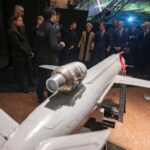
The fiscal 2024 defense authorization conference report establishes a Joint Energetics Transition Center under DoD acquisition chief William LaPlante. The center is to develop "an energetic materials strategic plan and investment strategy to guide investments in both new and legacy energetic materials and technologies across the entire supply chain for the total life cycle of energetic materials, including raw materials, ingredients, propellants, pyrotechnics, and explosives for munitions, weapons, and propulsion systems," according to Section 241 of the conference report. The…














